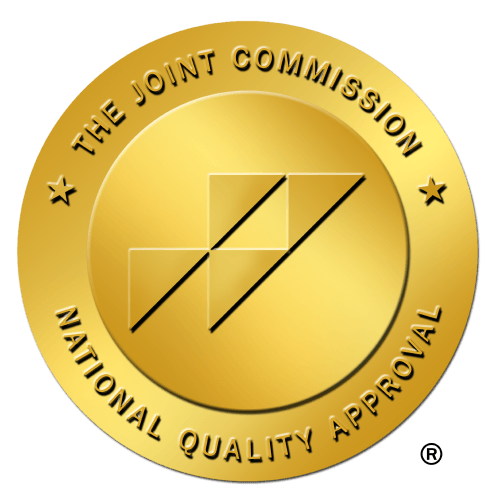Crank Addiction: The Dangers, Effects, and Symptoms of Methamphetamine Abuse


What is crank? A street name for methamphetamine, crank is a deadly, highly addictive stimulant that's trapped millions in addiction.
Easy access to methamphetamine significantly increases the risk of addiction. Communities with high drug availability, such as areas with significant methamphetamine production or distribution, may have higher addiction rates.
Prolonged use can lead to severe physical and psychological dependence and a range of detrimental effects on various organ systems. These may include dental problems (known as "meth mouth"), skin sores, cardiovascular complications, respiratory issues, cognitive impairments, and mental health disorders.
Stats About Crank:
According to recent Pew research, arrests for meth possession rose 59% between 2015 and 2019. During the same period, the number of Americans with a methamphetamine-related substance use disorder (SUD) climbed by 37%, and meth overdose deaths more than doubled.
What Is Crank?
"Crank" is a street name for methamphetamine, a potent and highly addictive stimulant drug. Methamphetamine is chemically similar to amphetamine but is far more potent. Also, unlike prescription amphetamines, crank is made from a toxic stew of chemicals. It is also known by various other street names such as "meth," "crystal," "ice," or "glass."
Crank is most often a white crystalline powder or in the form of clear, bluish crystals resembling glass or ice fragments. It can be consumed through several routes, including smoking, snorting, injecting, or swallowing. Each method of administration produces different effects and levels of intensity.
When methamphetamine enters the body, it stimulates the central nervous system, resulting in physiological and psychological effects.
Due to the illicit nature of methamphetamine production and the unregulated substances used in its manufacture, street methamphetamine can be impure and adulterated with harmful substances, increasing the risks associated with its use.
How Long Does Crank Stay In The System?
Crank has a relatively long half-life, which refers to the time it takes to eliminate half of the drug from the body.
The duration for which methamphetamine can be detected in the body depends on several factors, including the individual's metabolism, the dose taken, frequency of use, and the type of drug test employed.
Detecting Crank in a Urine Test
Crank can be detected in urine within 2-5 hours after use and remains detectable for 1-4 days. However, the detection window may be extended to 5-7 days in chronic users or individuals with high doses.
Detecting Crank in a Blood Test
Crank can be detected in blood within minutes after use and remains detectable for approximately 1-3 days. Heavy or chronic use, like urine tests, may result in a longer detection window.
Detecting Crank in a Saliva Test
Crank can be detected in saliva within minutes after use and remains detectable for 1-4 days. Heavy or chronic use may extend the detection window.
Detecting Crank in a Hair Follicle Test
Hair follicle tests are less common but can detect methamphetamine use over a longer period. Crank can be detected in the hair within 5-7 days after use and may remain detectable for up to 90 days or longer, depending on the length of the hair sample collected.
What Are the Symptoms of Crank Addiction?
Crank addiction has both physical and mental symptoms.
Physical Symptoms of Crank Addiction
Increased Energy and Alertness: Crank stimulates the central nervous system, leading to increased energy levels, excessive wakefulness, and restlessness. Individuals may find themselves staying awake for extended periods.
Weight Loss: Crank is known to suppress appetite, which can lead to significant weight loss over time. Addicted individuals may appear thin and emaciated.
Dilated Pupils: Crank use often results in dilated (enlarged) pupils due to the drug's impact on the body's sympathetic nervous system.
Dental Problems: Chronic crank users may experience severe dental issues, commonly called "meth mouth." This condition is characterized by tooth decay, gum disease, tooth loss, and overall poor oral health.
Skin Problems: Crank abuse can cause skin problems such as acne, sores, and a phenomenon known as "meth mites" or "crank bugs," which are tactile hallucinations of insects crawling under the skin. This can lead to excessive scratching and skin damage.
Rapid Heartbeat and Increased Blood Pressure: Crank increases heart rate and blood pressure, which can strain the cardiovascular system and lead to potential long-term health issues.
Mental and Behavioral Symptoms of Crank Addiction
Intense Euphoria: Crank produces a powerful rush of euphoria, which is highly reinforcing and can lead to addiction. Users may experience intense pleasure, heightened confidence, and a sense of invincibility.
Increased Irritability and Aggression: Prolonged crank use can cause irritability, agitation, and aggressive behavior. Addicted individuals may be easily provoked and prone to violent outbursts.
Paranoia and Hallucinations: crank abuse can induce hallucinations, delusions, and paranoia. Users may perceive things that aren't there and exhibit erratic and unpredictable behavior.
Poor Judgment and Impulsivity: Crank impairs judgment and decision-making abilities, leading to risky behaviors, impulsivity, and a disregard for consequences. This can result in engagement in unsafe sexual practices or criminal activities.
Cognitive Decline: Chronic use of crank can lead to cognitive impairments, including memory problems, decreased attention span, and difficulties with problem-solving and critical thinking.
Social Isolation: Addiction often causes individuals to withdraw from social activities, hobbies, and relationships. They may isolate themselves from friends and family, preferring the company of fellow users or engaging in drug-seeking behaviors.
Financial and Legal Issues: Addiction to crank can lead to significant financial strain as users prioritize obtaining and using the drug over meeting their responsibilities. This can result in legal troubles, such as theft, drug-related offenses, or engaging in illicit activities to support the addiction.
Find Hope at The Forge Recovery Center
Our admissions coordinators are standing by 24/7 to answer your questions, provide guidance, and schedule an initial assessment. Let us help you determine if our programs are the right fit to meet your needs.

What Are the Risk Factors for Crank Addiction?
The risk factors for addiction to crank can be categorized into several factors, including biological, environmental, psychological, and social.
Biological Factors for Crank Addiction
Genetic Predisposition: Individuals with a family history of substance abuse, including methamphetamine addiction, may have a higher risk of developing an addiction. Genetic factors can influence how the body responds to drugs and how vulnerable a person is to addiction.
Brain Chemistry: Methamphetamine affects the brain's reward system by increasing the release of dopamine, a neurotransmitter associated with pleasure and reward. Some individuals may have naturally lower levels of dopamine or altered brain chemistry, making them more susceptible to the intense pleasure and reinforcing effects of methamphetamine.
Environmental Factors for Crank Addiction
Peer Pressure: Being in social circles or environments where methamphetamine use is prevalent can increase the likelihood of experimentation and subsequent addiction. Peer pressure and the desire to fit in or be accepted can be significant influences.
Childhood Trauma or Abuse: Experiencing traumatic events during childhood, such as physical or sexual abuse, neglect, or unstable family environments, can contribute to a higher risk of substance abuse, including methamphetamine addiction, later in life.
Psychological Factors for Crank Addiction
Co-occurring Mental Health Disorders: Individuals with underlying mental health conditions, such as depression, anxiety, bipolar disorder, or attention-deficit/hyperactivity disorder (ADHD), may use methamphetamine to self-medicate and alleviate their symptoms. The temporary relief or euphoria the drug provides can create a cycle of dependence and addiction.
Self-Esteem and Coping Mechanisms: Low self-esteem, poor impulse control, and ineffective coping mechanisms can make individuals more vulnerable to substance abuse. Crank can initially provide a sense of confidence, energy, and escape from emotional distress, making it appealing to those seeking relief or enhancement.
Social Factors for Crank Addiction
Socioeconomic Factors: Poverty, unemployment, lack of education, and limited access to resources can contribute to a higher risk of addiction. Methamphetamine may be seen as an escape or a means to cope with challenging life circumstances.
Family Dynamics: Growing up in a household where substance abuse is present or witnessing family members struggle with addiction can normalize drug use and increase the likelihood of future addiction.
Social Isolation: Feeling disconnected, lonely, or socially isolated can drive individuals to seek solace or belonging through drug use. Crank may provide a temporary sense of connection or confidence in social situations.
What Are Crank Withdrawal Symptoms?
Withdrawal symptoms from crank, known as methamphetamine, can be intense and challenging to manage. Withdrawal symptoms can vary in duration and intensity depending on factors such as the individual's level of dependence and overall health.
Here are some common withdrawal symptoms associated with crank addiction:
Fatigue and Increased Sleep
One of the initial symptoms of crank withdrawal is extreme fatigue and an increased need for sleep. The body is recovering from the stimulant effects of crank, and individuals may experience excessive tiredness and prolonged periods of sleep.
Depression and Anxiety
Crank withdrawal often leads to feelings of depression and anxiety. Individuals may experience a persistent low mood, lack of interest in activities, feelings of hopelessness, and increased anxiety or restlessness.
Intense Cravings
Cravings for crank can be potent during withdrawal. The intense desire to use the drug again can be overwhelming and contribute to a high risk of relapse.
Increased Appetite and Weight Gain
As the stimulant effects of crank wear off, individuals may experience an increase in appetite. This can lead to intense cravings for sugary or high-calorie foods, resulting in weight gain.
Disturbed Sleep Patterns
While fatigue is a common symptom, individuals may also experience disturbances in their sleep patterns. They may have difficulty falling asleep, vivid dreams, or nightmares.
Agitation and Irritability
Individuals may become easily agitated and irritable during withdrawal. Mood swings, anger, and frustration are expected as the brain and body readjust to functioning without the drug.
Lack of Concentration and Cognitive Difficulties
Crank withdrawal can impair cognitive function. Individuals may have trouble concentrating, experience memory lapses, and struggle with cognitive tasks that were previously easier for them.
Increased Appetite and Weight Gain
As the stimulant effects wear off, individuals may experience an increase in appetite. This can lead to intense cravings for sugary or high-calorie foods, resulting in weight gain.
Physical Discomfort
Some physical symptoms of crank withdrawal may include muscle aches, headaches, tremors, and a general feeling of discomfort. These symptoms are part of the body's adjustment process as it returns to normal.
Suicidal Thoughts
In some cases, individuals going through methamphetamine withdrawal may experience thoughts of self-harm or suicide.
How Is Crank Addiction Treated
Since addiction is a complex condition that affects both the body and the mind, a comprehensive approach is necessary to address its various aspects. Here are some common treatment methods used for crank addiction:
Drug Detox
The first step in treating crank addiction is detoxing from meth. This involves removing the drug from the individual's system in a safe and controlled manner. Medical professionals may provide medications to manage withdrawal symptoms and ensure the individual's safety throughout detox.
Behavioral Therapies
Behavioral therapies play a crucial role in addiction treatment. These therapies help individuals identify and change their destructive patterns of thinking and behavior associated with drug use. Cognitive behavioral therapy (CBT) is a commonly used approach that helps individuals develop coping mechanisms, manage cravings, and avoid relapse triggers.
Contingency management (CM) may also be employed, which provides rewards or incentives for maintaining abstinence.
Individual Counseling
Individual counseling sessions provide a safe and confidential space for individuals to explore their thoughts, emotions, and behaviors related to addiction. It allows for personalized treatment planning and addresses underlying issues contributing to substance abuse.
Group Therapy
Group therapy involves participating in sessions with others who are also in recovery from addiction. These sessions provide a supportive environment where individuals can share experiences, gain insights, and receive peer encouragement. Group therapy fosters community and helps individuals develop crucial social support networks.
Family Therapy
Involving family members in the treatment process can be essential for addressing family dynamics and improving communication and support systems. Family therapy helps repair relationships, educates loved ones about addiction, and promotes healthy boundaries.
Medication-Assisted Treatment (MAT)
In some cases, medication may be prescribed to help manage cravings and reduce the likelihood of relapse. Medications such as bupropion, naltrexone, or antidepressants may be used under the supervision of healthcare professionals.
Support Groups
Participation in support groups like Narcotics Anonymous (NA) or Crystal Meth Anonymous (CMA) can be highly beneficial for individuals in recovery. These groups provide a platform for sharing experiences, receiving ongoing support, and learning from others who have successfully overcome addiction.
Dual Diagnosis Treatment
Many individuals with crank addiction may also have co-occurring mental health disorders such as depression, anxiety, or bipolar disorder. Integrated dual diagnosis treatment that simultaneously addresses addiction and mental health is essential for long-term recovery.
Aftercare and Relapse Prevention
Recovery from crank addiction is an ongoing process, and aftercare is crucial for maintaining sobriety. Aftercare may include continued therapy, support group participation, regular check-ins with healthcare providers, and strategies for managing triggers and preventing relapse.
Are You Struggling with Mental Health or Addiction?
We Can Help. Call Us Now!
CALL: 877-839-1772
Crank Addiction Is Devastating…and Lethal if Untreated. The Forge Recovery Center Can Help
The Forge Recovery Center provides comprehensive treatments that help people overcome crank addiction. With a highly experienced team of counselors, managers, and therapists, our clients have a team that walks with them through their entire recovery journey.
From detox to aftercare, there’s no better place to seek treatment for crank addiction. If you’d like to learn more about our successful methamphetamine addiction treatment program, please reach out to The Forge Recovery Center today.
Are You Struggling with Mental Health or Addiction?
We Can Help. Call Us Now!
CALL: 877-839-1772





